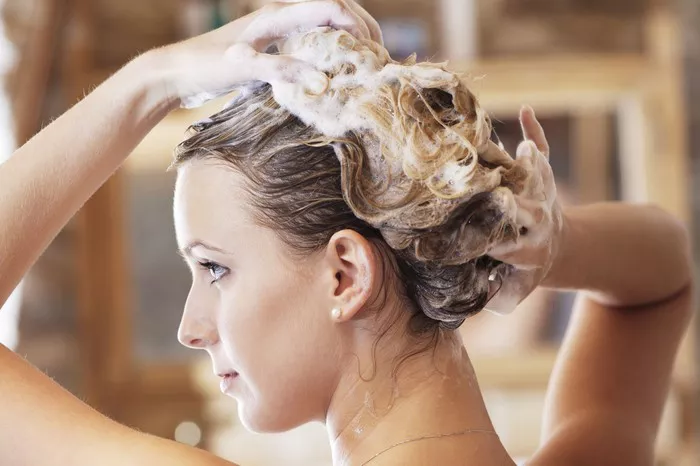Silky hair is a universal desire. It looks healthy, feels soft, and radiates confidence. But achieving that glossy finish requires more than just shampooing and hoping for the best.
As a hairstylist with years of experience, I’ve seen how small changes in routine can transform dull, frizzy hair into silky strands. This guide breaks down every step—from pre-wash prep to daily maintenance—to help you get salon-quality results at home.
Why Does Hair Lose Its Silkiness?
Before diving into solutions, let’s understand the problem.
Hair becomes rough or frizzy due to:
- Damage from heat, chemicals, or environmental factors.
- Dryness caused by harsh products or lack of moisture.
- Poor technique (e.g., rough towel-drying, hot water).
- Product buildup blocking nutrients from reaching the hair shaft.
Silky hair starts with a healthy cuticle (the outer layer of your hair). When the cuticle lies flat, light reflects off it, creating shine. Damage lifts the cuticle, leading to frizz and dullness. Your goal is to smooth and protect this layer.
Pre-Wash Preparation
Brush Your Hair Before Showering
Always detangle hair before washing. Wet hair is fragile, and brushing it in the shower can cause breakage. Use a wide-tooth comb or a brush designed for wet hair (e.g., boar bristle) to gently remove knots.
Use a Pre-Wash Treatment (Optional)
For extra-dry or damaged hair, apply a lightweight oil (like argan or jojoba) to the ends 15–30 minutes before washing. This creates a protective barrier, preventing moisture loss during shampooing.
Washing Your Hair Correctly
Choose the Right Shampoo
- Fine/Oily Hair: Use a clarifying shampoo once a week to remove buildup, but avoid sulfates daily (they strip natural oils).
- Dry/Curly Hair: Opt for sulfate-free, moisturizing formulas with ingredients like shea butter or coconut oil.
- Color-Treated Hair: Use pH-balanced shampoos to protect dye and prevent fading.
Water Temperature Matters
Hot water opens the hair cuticle, leading to dryness. Use lukewarm water to rinse and cool water for the final rinse. Cold water seals the cuticle, boosting shine.
Shampoo Technique
- Focus on the scalp, not the ends. Massage gently with fingertips (not nails) to stimulate blood flow.
- Rinse thoroughly—leftover shampoo attracts dirt and weighs hair down.
Condition Properly
- Apply conditioner from mid-length to ends. Avoid the scalp if you have oily roots.
- Use a wide-tooth comb to distribute the product evenly.
- Leave it on for 2–5 minutes before rinsing.
Post-Wash Care
Pat Dry, Don’t Rub
Rubbing hair with a towel creates friction, roughening the cuticle. Instead, wrap hair in a microfiber towel or soft cotton T-shirt to absorb moisture gently.
Apply a Leave-In Conditioner
Leave-in products provide lasting hydration. Spray or work a pea-sized amount through damp hair, focusing on ends. Look for ingredients like glycerin or silk proteins.
Use a Hair Serum or Oil
A drop of silicone-free serum (e.g., squalane or marula oil) smooths frizz and adds shine. Apply to damp hair before styling.
Drying Techniques
Air-Dry When Possible
Heat styling damages the cuticle over time. Let hair air-dry 80% before using tools. For curly hair, scrunch with a T-shirt to enhance waves without frizz.
Blow-Dry Safely
If you need speed:
- Use a heat protectant spray.
- Keep the dryer 6 inches away from hair.
- Direct the nozzle downward to flatten the cuticle.
Avoid Rough Towels
Terrycloth towels cause breakage. Switch to microfiber or bamboo towels for less friction.
Silky Hair for Silkiness
Lower Heat Settings
Flat irons and curling wands should be set to 300–350°F (150–175°C). Higher temps fry the hair.
Try Heatless Styles
Braids, buns, or silk scarves create waves overnight without damage.
Finish with a Shine Spray
A lightweight mist containing dimethicone or hydrolyzed keratin adds instant gloss.
Long-Term Maintenance
Trim Regularly
Split ends travel up the hair shaft, causing breakage. Trim every 8–12 weeks.
Deep Condition Weekly
Use a mask with proteins (keratin) or humectants (honey) to repair and hydrate. Apply to clean hair, cover with a shower cap, and rinse after 20 minutes.
Protect Hair at Night
Sleep on a silk or satin pillowcase. It reduces friction and prevents tangles.
Eat for Hair Health
Foods rich in omega-3s (salmon), biotin (eggs), and vitamins A/C (spinach, citrus) strengthen hair from the inside.
Common Problems & Fixes
- Frizz in Humidity: Use anti-humidity serums with polymers to block moisture.
- Hard Water Buildup: Rinse with diluted apple cider vinegar (1 tbsp per cup of water).
- Flat Hair: Apply dry shampoo to roots for volume without stripping oils.
Conclusion
Silky hair isn’t about luck—it’s about consistency. Follow these steps, adjust based on your hair type, and give products time to work. In 4–6 weeks, you’ll notice softer, shinier strands that feel as good as they look.
Related topics:
1.6 Best Shampoos for Shiny and Silky Hair
2.How to Get Silky Hair in 10 Minutes: Just 6 Steps
How Long Does Blonde Dye Last?


